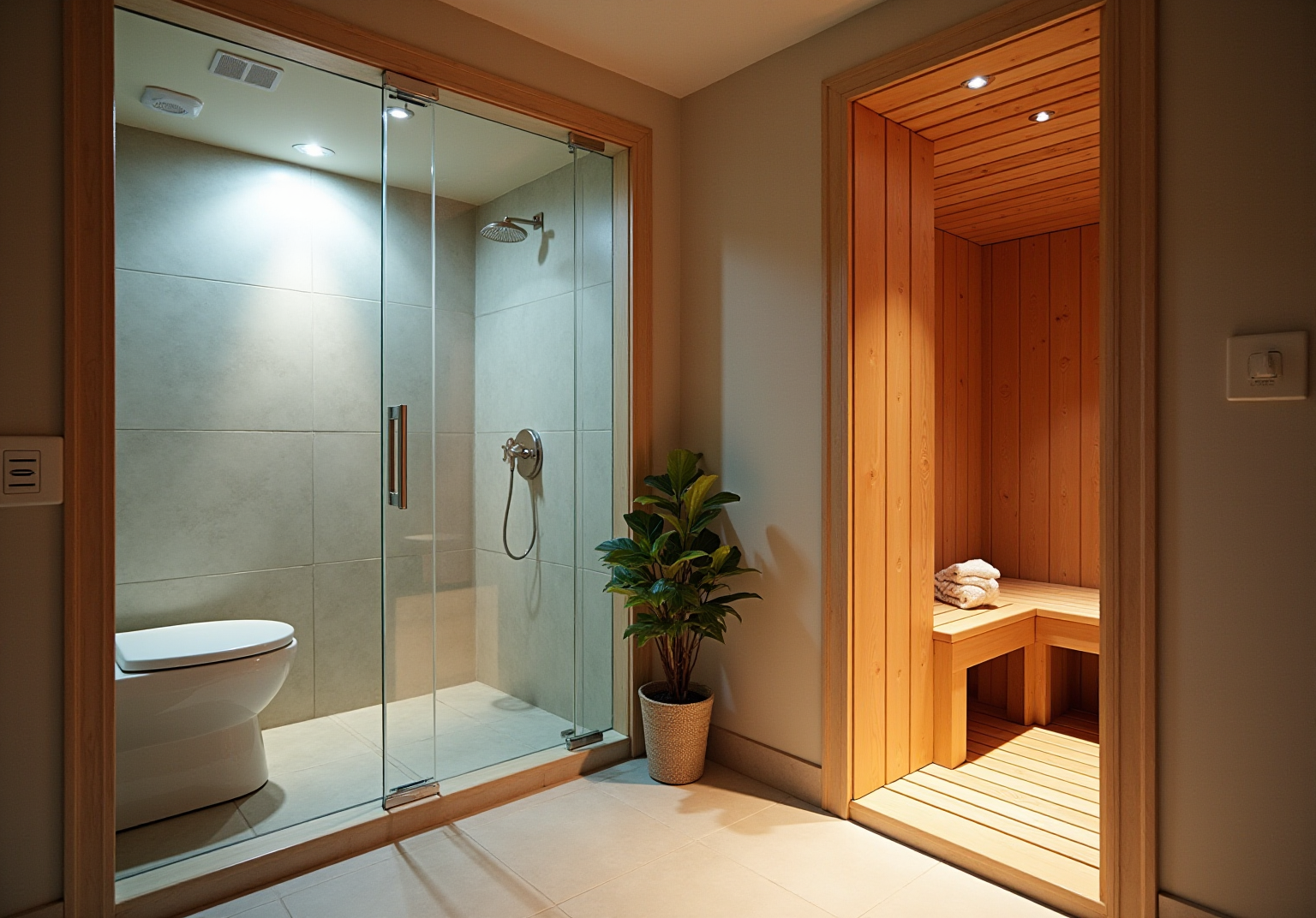Create Your Home Steam Room and Sauna: A Step-by-Step Guide

Overview
This article presents a comprehensive step-by-step guide for creating a home steam room and sauna, detailing the essential preparations, construction steps, and maintenance tips. It underscores the significance of selecting the right materials, ensuring proper installation, and conducting regular upkeep. These elements are crucial for maximizing the health benefits and longevity of these wellness facilities. By following this guide, you can create an environment that enhances your well-being and promotes relaxation.
Introduction
The allure of creating a personal oasis at home is undeniable, particularly as wellness trends increasingly emphasize the profound benefits of steam rooms and saunas. These dedicated spaces not only provide a sanctuary for relaxation but also offer a multitude of health advantages, ranging from detoxification to enhanced skin health.
However, embarking on the journey to establish a home steam room and sauna can seem formidable, often accompanied by numerous questions regarding design, materials, and maintenance. What essential steps must homeowners undertake to guarantee a successful installation? How can they fully harness the myriad benefits these wellness retreats offer?
Understand the Basics of Steam Rooms and Saunas
Steam areas and relaxation spaces are both popular wellness facilities that offer distinct health advantages. A steam room is a heated environment filled with moist air, typically maintained at a temperature of 110-120°F (43-49°C) with high humidity levels. This setting promotes sweating, aiding in detoxification and enhancing skin health.
In contrast, infrared heat rooms, like those available at Tsavo Wellness in Mosman, Sydney, utilize dry heat, typically at temperatures between 150-195°F (65-90°C), with low humidity. The experience is elevated further by employing infrared light that penetrates the skin more deeply, enhancing detoxification, circulation, and overall wellness.
The infrared therapy experience can raise your body's internal temperature, resulting in intense sweating that supports detoxification, boosts metabolism, strengthens the immune system, and improves skin health and complexion. Understanding these distinctions is crucial for selecting the right option for your home wellness experience, whether you prefer the moist heat of a home steam room and sauna or the dry, penetrating warmth of an infrared unit.

Prepare for Your Steam Room and Sauna Installation
Before initiating the installation of your home steam room and sauna, it is paramount to assess the space you intend to utilize. This careful consideration sets the stage for a successful setup.
Choose the Location: Select a well-ventilated area that provides easy access to water and electricity. Ideal locations typically include basements, bathrooms, or additional spaces that can accommodate a home steam room and sauna as part of your wellness facility.
Measure the Space: Confirm that the area can accommodate your desired facility size. A minimum dimension of 4x6 feet is recommended to ensure both comfort and functionality.
Select Materials: For steam rooms, moisture-resistant materials like tile or acrylic are optimal. In contrast, hot rooms benefit from heat-resistant woods such as cedar or hemlock, enhancing both durability and aesthetics. As Lisa Appleby notes, "Whether you desire a conventional wood structure or a contemporary infrared version, local builders can customize the design to suit your requirements and area."
Check Local Codes: Investigate local building codes and regulations specific to Sydney to ensure compliance, particularly regarding electrical and plumbing installations, which are vital for safety and functionality. This includes understanding the requirements for drainage and ventilation.
Gather Tools and Supplies: Assemble all necessary tools and materials, including insulation, vapor barriers, heaters, and benches, to streamline the installation process. Notably, prefab relaxation kits can be set up in under four hours, presenting a convenient option for homeowners.
By thoughtfully considering these factors, you can create a relaxing and rejuvenating space that includes a home steam room and sauna, aligning with your wellness goals. Effective setups can serve as inspiration for your design choices, transforming your wellness space into a cherished home steam room and sauna.

Build Your Steam Room and Sauna: Step-by-Step Instructions
For the Steam Room:
- Frame the Walls: Utilize moisture-resistant framing materials to construct the walls, ensuring durability against vapor exposure.
- Install Insulation: Properly insulate both the walls and ceiling to retain heat and prevent moisture damage, which is crucial for maintaining an effective humid environment.
- Add a Vapor Barrier: Install a vapor barrier to protect the structure from moisture damage, significantly improving the lifespan of your sauna.
- Finish the Walls: Choose tile or acrylic panels for wall finishing, ensuring they are sealed correctly to prevent moisture infiltration.
- Install the Heater: Adhere to the manufacturer's instructions for installing a steam generator, paying close attention to drainage requirements to avoid water accumulation.
- Add Seating: Construct benches from moisture-resistant materials, ensuring they are comfortable and accessible for users.
For the Sauna:
- Frame the Structure: Build the frame using heat-resistant wood, ensuring proper spacing for insulation to maximize heat retention.
- Insulate the Walls: Use fiberglass or foam insulation to effectively retain the heat within the space, enhancing the overall experience.
- Install the Heater: Position the heater according to the manufacturer's guidelines, ensuring that safety clearances are maintained to prevent fire hazards.
- Finish the Interior: Line the walls with tongue-and-groove wood, leaving gaps for ventilation to promote air circulation and comfort.
- Add Benches: Construct benches at varying heights to provide diverse seating options, catering to different preferences.
- Install Lighting: Use heat-resistant lighting fixtures to create a soothing ambiance, enhancing the overall relaxation experience.

Finalize and Maintain Your Home Steam Room and Sauna
To ensure the longevity and optimal performance of your steam room and sauna, follow these essential maintenance steps:
- Test the Equipment: Prior to regular use, it is crucial to test the generator and heater to confirm they are functioning correctly.
- Seal All Joints: Inspect the structure for any gaps or leaks and seal them effectively to prevent moisture loss.
- Regular Cleaning: Implement a routine cleaning schedule to avoid mold and mildew buildup. Utilize appropriate cleaners that are safe for your materials.
- Check the Heater: Conduct periodic inspections of the heater for any signs of wear or malfunction, replacing parts as necessary to maintain efficiency.
- Monitor Humidity Levels: In vapor chambers, it is vital to verify that humidity levels are consistently maintained for optimal performance. Employ a hygrometer for accurate monitoring.
- Schedule Professional Maintenance: It is advisable to have a professional conduct an annual inspection of your home steam room and sauna to ensure all components are in excellent working condition.
By adhering to these guidelines, you not only enhance the functionality of your facilities but also extend their lifespan, ensuring a rewarding experience for all users.

Conclusion
Investing in a home steam room and sauna represents an exceptional opportunity to elevate personal wellness and relaxation within the comfort of your living space. This guide has illuminated the distinct characteristics of steam rooms and saunas, empowering homeowners to make informed decisions that align with their health and relaxation needs.
Key steps outlined in this article include:
- A thorough understanding of the differences between steam and infrared heat options
- Careful preparation of the installation site
- A structured approach to constructing both facilities
Furthermore, regular cleaning and equipment checks are essential for maintaining these wellness spaces, ensuring their longevity and effectiveness, and providing a consistently enjoyable experience.
Ultimately, a home steam room and sauna not only promote significant physical health benefits—such as improved circulation and detoxification—but also enhance mental well-being by creating a personal sanctuary for relaxation. By following the guidance provided, individuals can transform their homes into rejuvenating retreats that support a healthier lifestyle and foster a profound sense of tranquility. Take action now to create your own oasis of wellness.
Frequently Asked Questions
What is a steam room?
A steam room is a heated environment filled with moist air, typically maintained at a temperature of 110-120°F (43-49°C) with high humidity levels. It promotes sweating, aiding in detoxification and enhancing skin health.
How does a sauna differ from a steam room?
A sauna, specifically an infrared heat room, utilizes dry heat at temperatures between 150-195°F (65-90°C) with low humidity. It employs infrared light that penetrates the skin more deeply compared to the moist heat of a steam room.
What are the health benefits of using a steam room?
The health benefits of using a steam room include promoting sweating, aiding in detoxification, and enhancing skin health.
What advantages does infrared therapy offer?
Infrared therapy can raise the body's internal temperature, resulting in intense sweating that supports detoxification, boosts metabolism, strengthens the immune system, and improves skin health and complexion.
How can I choose between a steam room and an infrared sauna for home wellness?
Understanding the distinctions between the moist heat of a steam room and the dry, penetrating warmth of an infrared sauna is crucial for selecting the right option for your home wellness experience.

